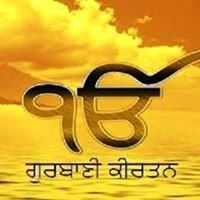The Sikh Kirpan (Sword)
Dr. Trilochan Singh
Guru Gobind Singh received from Guru Nanak The Sword, the Bowl and Victory Unfailing1. (Guru Gobind Singh)
When all other means fail to curb tyranny, It is but lawful to take up the Sword.
(Guru Gobind Singh, Zafarnamah, 2)
The Sword-Like Spirit of the Sikh Gurus
Guru Nanak was born with a sword in his heart and soul.It was a sword, he used relentlessly against hypocrisy, cruelty and terror. He denounced religious thugs, and condemned ruthless kings and ministers as they had never been condemned before. Lamenting and protesting against Babur’s massacre, he wrote, “Terrible has been the slaughter, loud have been the cries of the sufferers. Did this not awaken pity in Thee, O Lord? If a strong power attacks another strong power, no one would grieve, none would complain. But when fierce tigers prey on helpless cattle, Thou Herdsman, must answer for it.”2
When Satta and Balwand, the Bards of the Sikh Gurus, describe the anointing ceremony of Guru Nanak’s successor, Guru Angad, they say, “Nanak placed the umbrella of sovereignty on the head of Angad. He has also graced the heart of Angad with the mighty sword (kharag) of divine wisdom. While yet living in this world, Guru Nanak installed his disciple Angad as his successor and Guru, and became the disciple of this successor.”3 Thus Guru Nanak passed on his Sword of Spirit to Guru Angad.
Guru Arjan, the fifth Guru, uses military metaphors throughout his writings. He used these military metaphors to arm his disciples with the Sword of the Spirit, without which no battle can be fought. Guru Arjan writes:
garibi gada hamarl.
khana sagal renii chhari.
Humility is my spiked mace,
To be the dust under everyone’s feet
Is my Two-Edged Sword.
None of the wicked can withstand this weapon.
The perfect Guru has taught me this.
(Adi Guru Granth, Guru Arjan, Raga Sorath, 628)
And with these weapons Guru Arjan became the first martyr of Indian history. He had already started giving military training to his son and successor, Hargobind.
The Sword of Guru Hargobind
When the Sixth Master, Guru Hargobind succeeded his father at the age of 11, he put on two swords. One, he said, was the “Sword of Spirituality”, (Piri) and the other was the “Sword of Political Sovereignty”, (Miri). The Sikhs were to uphold both Religious and Political Freedoms wherever they existed. One was utterly useless without the other. They were not merely to worship God and leave their political and religious freedom in the hands of others and live like slaves, but to fight for fundamental freedom and uphold their dignity and religious, political and cultural identity and integrity, no matter in which country they lived. Nor were the Sikhs supposed to indulge in any such political thinking and action which was devoid of moral and spiritual values. Religion without political freedom and dignity was abject slavery and politics without religion was organized barbarism.
For Guru Gobind Singh the Sword was symbol of God’s Power, Justice and Grace of Divine protection. Through this Invisible and Visible Sword, God protects the saints and the virtuous, and punishes the evil-doers, no matter in which garb evil operates in the world. Contrary to the traditions of ahirnsa (non-violence) carried to extremes of submission of tyranny, Guru Gobind Singh gave a new moral and spiritual direction and new Names of God, based on His Attributes as the Saviour of the weak and humble, and Destroyer and Annihilator of the wicked. Most of the Names of God in Indian tradition emerged out of the divine personality of dancing Krisna and pathetic lover Rama. The Names which he gave to God, centred around the Sanskrit word for Sword, like: Kharag (Braj Bhasa: Khag); As and its compound words As-dhuj, Asketu. The Persian words Tegh and Shamshir are also frequently used.
khag khand bihandam khal dal khandam at’i ran mahdam barbahdam.
Sword (khag) that smites in a flash,
That scatters the armies of the wicked,
In the great battlefield.
Thou symbol of valour,
Thine arm is irresistible;
Thy brightness shineth forth.
The blaze of Thy splendour dazzles like the sun.
Sword, As, Thou art Protector of the saints,
Thou art the scourge of the wicked.
Scatterer of sinners, I take refuge in Thee.
Jai Teghan: Victory to Thee, Supreme Sword; Saviour and Sustainer; Jai Teghan: Sword Supreme, Victor)’ to Thee.
(Dasam Granth, Guru Gobind Singh, Bachitar Natak, 1:2, p. 38)
Thus Guru Gobind Singh has clearly explained in his own words the meaning of the ‘Sword’ as he uses it. His Sword “scatters the wicked” has “the dazzling splendour of the sun”. It is “the Protector of the saints”, “scourge of the wicked”, “Refuge of seers and Heroes”. The Sword, the Eternal and Living Presence of God, Redeemer and Saviour of suffering humanity is ever victorious. The Sword (Tegh) in Sikh theosophy goes hand in hand with Degh (lit: Cauldron or Bowl), the symbol of undiminishing store of food or physical sustenance. Degh and Tegh, as Guru Gobind Singh uses, are the key word symbols of moral and spiritual supremacy of those, who consider God as the divine Giver and Protector.
Maha Kal rakhvar hamaro.
Maha Loh mai kinkar tharo.
Knowing that I am Thine,
Protect me graciously Lord,
Single out my enemies, Lord,
And destroy them one by one.
May there flourish in the world,
Degh: the Bowl of undiminishing Food,
Tegh: the Sword, the symbol of God’s Power and Justice.
(Guru Gobind Singh, Dasam Granth, Krishan Avatar, 435-36, p. 310)
In his letter to Aurangzeb which he wrote when Aurangzeb broke his oath on the Koran for peaceful settlement, Guru Gobind Singh vividly portrays the havoc wrought by the sword of the Mughal despot and the Protective grace of the Invisible Sword, the Presence of Almighty God. He writes:
mazan tegh bar khun kas bedregh. turd nlz khun charkh rezad ba tegh.
Do not mercilessly and ruthlessly use your sword On the helpless people,
Because one day the Unseen Sword Will fall on you for your blood.
(Dasam Granth, Guru Gobind Singh, Zafarnamah, 69, p. 1392)
When all peaceful means fail to curb the oppressive tyranny of a totalitarian regime, it is righteous, says Guru Gobind Singh, to resort to the sword:
chu kdr az hamah hilte dar guzast.
haldl ast burdan ba Samsir dast.
When all other means fail to curb tyranny,
It is but lawful to take up the sword.
(Dasam Granth, Guru Gobind Singh, Zafarnamah, 22, p. 1390)
Guru Gobind Singh also writes about the ‘Sword of Wisdom.’ “Gian-ki-badhani” which dispels all darkness and sweeps away all cowardice. In Krishan Avatar he gives his own philosophy, after writing the life of Lord Krisna, based on some hitherto unavailable version of Dasam Sikand of Bhagvatam, “Blessed is he in this world, who always has the Name of God on his lips, and in his heart is ever enshrined the spirit of true warriors. Knowing this body to be transient, he sails on the boat of glorifying God and crosses the stormy ocean of existence. He makes his body a mansion of patience, and within it he lights the blazing lamp of Divine Wisdom. Holding the Sword of Divine Knowledge (Gian-ki- badhanl) in his hands, he sweeps away all cowardice out of his inner life.”4
Professor Puran Singh rightly opines: “Every Sikh is to wear His Sword. Not his own. Kirpan is gift from the Guru. It is not an instrument of offence or defence; it is mind made intense by the love of the Guru. The Sikh is to have a sword-like mind. It is the visible sign of an intensely sensitive soul. It is but the symbol of the myriad personality of the Guru’s Sikh that knows no defeat, no disappointment, the personality that is unconquerable in its hope and in its spiritual radiance. Guru Gobind Singh says, “I will make one Sikh dominate over a million.” This realm is the kingdom of the illumined mind. The highly intensified and developed intellect naturally becomes overpowering so much so that it becomes fascinating and attractive in a physical sense. It gather its own moths like the intense flame of a night lamp. The presence of a great spiritual man overpowers millions. What is mind, if it has not the flash of the lightning and the sword? All conquests in the fields of life are mental and moral; physical conquests have meaning and significance, if they are over the forces of evil. He who wears the Guru’s Sword is a complete man, full grown in moral responsibility and spiritual disciplines.”5
References and Notes
- Degh O Tegh Fateh nusrat be-dirahg Yaft az Nanak, Guru Gobind Singh.
The translation which I have given is by Sir Muhammed Iqbal. It is difficult to accept the translation given by Teja Singh-Ganda Singh in their book A Short History of the Sikhs. There is also no historical truth in Dr Garida Singh’s suggestion in his book Banda Bahadur that Banda was the author of this couplet. We find it in Dasam Granth, Sarb-Loh Granth, and Sainapati’s allusions in Gur Sobha. We find it in the letters of Mata Sahib Devi. We also find it written in Guru Gobind Singh’s own hands in a document preserved with Sodhi families of Anandpur.
- Adi Guru Granth, p. 360
- Adi Guru Granth, Var Satta and Balwand, 966.
- 4. Dasam Granth, “Epilogue to Krishna Avatar”, p. 570.
- Puran Singh, The Spirit Born People, p. 94.
Source – The Turban and the Sword of the Sikhs by Dr. Trilochan Singh



